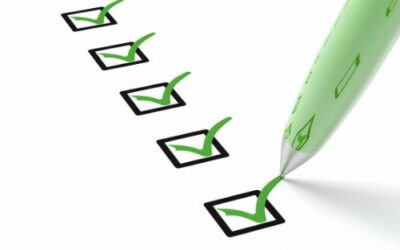
Assets are the building blocks of every business. But enterprises invest money to acquire assets. After spending a great amount of money on acquiring them, a lot of money is still required to keep assets well-maintained and in working condition. That doesn’t mean assets incur expenditures only. More importantly, they help you generate revenue.
However, the revenue must always exceed your expenditure in order for you to earn a profit. And when it comes to profits, keeping an asset register and using it the right way hold key importance.
To run a successful business, you must burn the candle at both ends. That is, you must strive to maximise revenues while at the same time try your best to keep expenditures at a minimum. This doesn’t mean you should be miserly, but frugal. Utilising an asset register is one of the perfect examples of doing so.
itemit’s Asset Register — An Introduction
You could keep an asset register for general asset tracking purposes, or more specific asset management areas such as fixed asset management, IT asset management or equipment checkout.
All of these work, pretty much, the same way. An asset register carries a comprehensive log of all your assets and their relevant details. If, for instance, you operate a fixed asset register, it’s going to be a record of all of your IT hardware, furniture, phones, and other permanent fixtures.
itemit’s asset register software allows you to create unique asset profiles. Rather than using laborious spreadsheets and entering data rows and columns and cells monotonously, creating and using asset profiles with itemit is pretty fun!
All relevant details about an asset can be neatly stored away in an online database and any time you update them, the change takes place throughout the database. You can view and manage from any device with the itemit app or web portal.
Best Ways to Use an Asset Register to Save Money
- Maintain an up-to-date and accurate asset register
- Using asset tags to upgrade asset management
- Using asset management reports to make better decisions
- Save money by storing warranty information securely
Maintain an Up-to-date and Accurate Asset Register
Investing in an advanced asset tracking software is only the first step. To make the most out of it, you must ensure that assets are accurately logged and updated every time there is a change. This is because keeping obsolete asset records is no better than keeping none at all.
With an accurate and updated record of what assets you have and those that you don’t, you can avoid common pitfalls like avoiding duplicate purchases and saving up on extra taxes you might be paying on ghost assets.
Using Asset Tags to Upgrade Asset Management
Upgrading from conventional asset management methods to using an asset register can prove to be a game changer for your business. But if you want something even better, turbo-charge your asset tracking with itemit’s asset tags.
These are unique QR code or RFID tags that can be attached to assets for identifying assets quickly and easily. Tagging your assets gives each item a unique identity. All you need to do is scan the QR tag with your smartphone camera to access an asset’s profile on itemit.
Asset tags speed up the asset management process and increase the accuracy of your asset register, hence indirectly helping you save a lot of money.
Using Asset Management Reports to Make Better Decisions
itemit’s asset tracking software ensures that all essential asset data is just a few clicks away from you at all times. But there’s more. You can also export asset management reports that carry invaluable information on asset utilisation, asset productivity, asset expenses and more.
With this useful information in your hands, you know which assets are used the most by your workforce and which ones are underutilised. You can use this data to make data-based predictions about your future asset needs.
In the same vein, you can identify assets that are still functioning but using them costs you much more than the revenue they generate. This is another great way an asset register helps you save money.
Save Money by Storing Warranty Information Securely
Who even remembers the warranty details after a few months of buying a product? Well, the most frugal individuals and companies do! These are the same people and companies who want to make the most out of the money they spend on their assets.
We tend to throw away the boxes and warranty manuals that come with our assets, because we never have space for such stuff. But in the process, we are also throwing away a chance to take advantage of warranty policies for many of our assets in case something goes wrong.
You can use an asset register and store the warranty information neatly within each asset profile. Anytime something goes wrong with an asset, you can easily access the warranty information and take advantage of it.
Bottom Line
The aforementioned are only some of the various ways of using an asset register to save yourself both time and money. If you want to learn more ways how itemit can help save money particularly for your business, feel free to contact our friendly team at team@itemit.com.
If you’re ready to take itemit for a test drive, fill in the form below to start your 14-day free trial.

Try itemit
Choose a better way to track
your assets.
Start your free 14-day trial now!

Keep Learning
itemit Blog
Tips, guides, industry best practices, and news.
Why Having An Accurate Asset Register Is Important
Why is having an accurate asset register so important and how can it help with equipment tracking? Read this post now to find out!
What To Include In Your Fixed Asset Register
What should you include in your fixed asset register and how can you make it work for you? Read this post now to find out!
What Exactly Is An Asset register?
What exactly is an asset register and will your chosen asset register format offer you everything you need? Read this post to find out!




